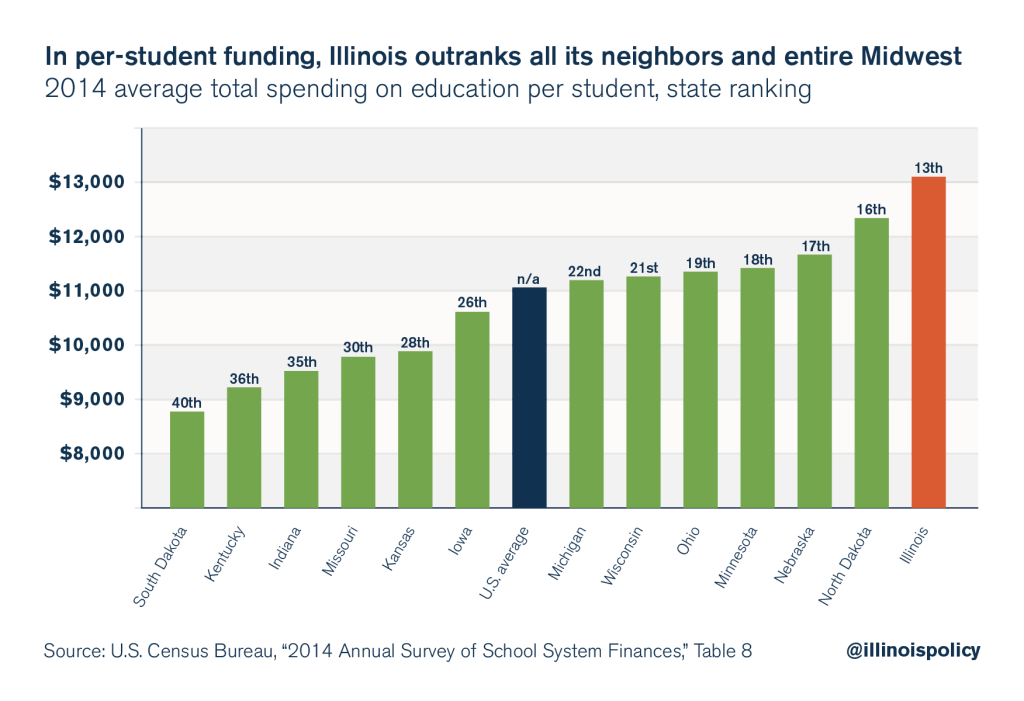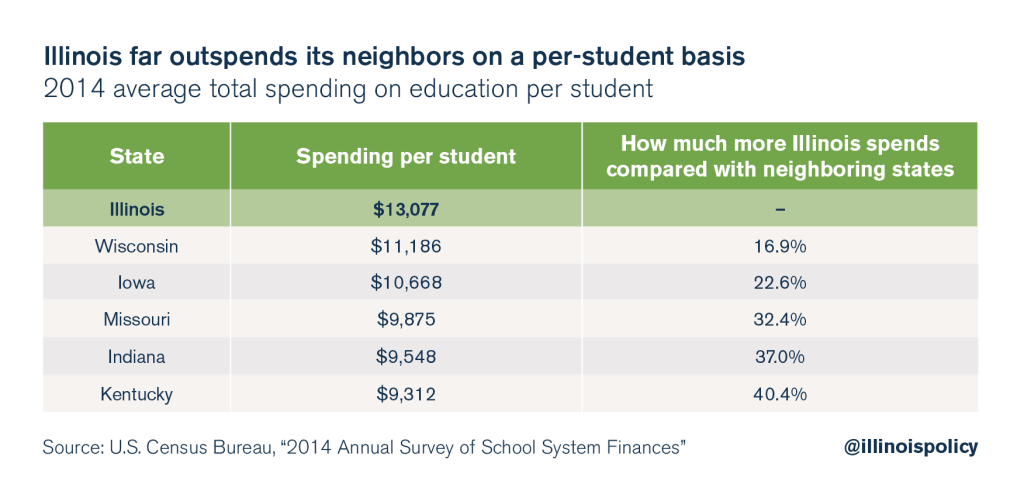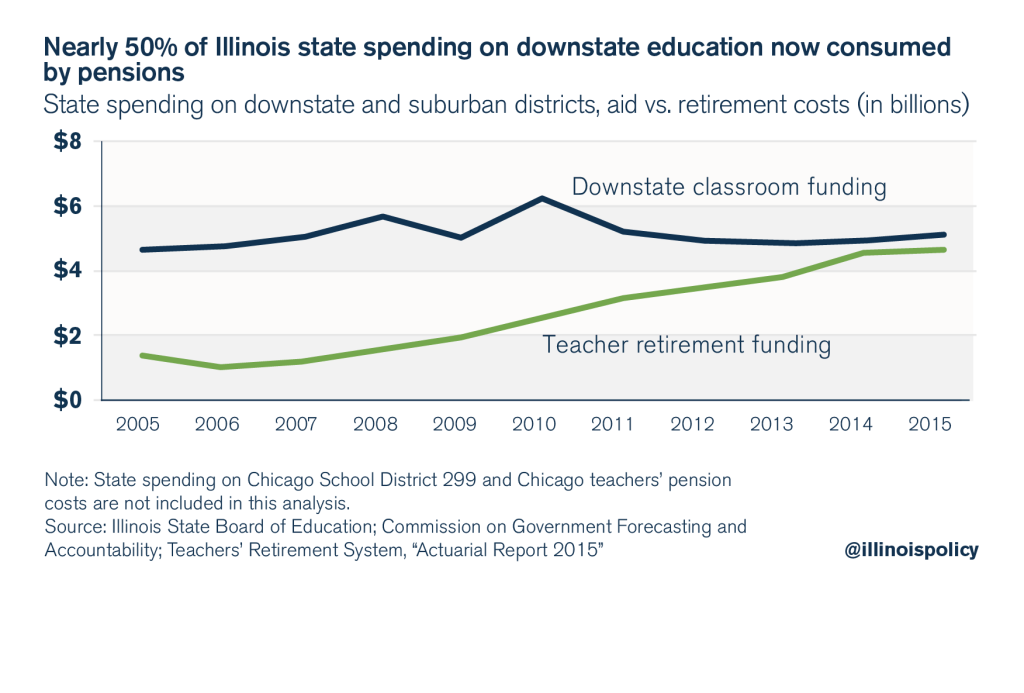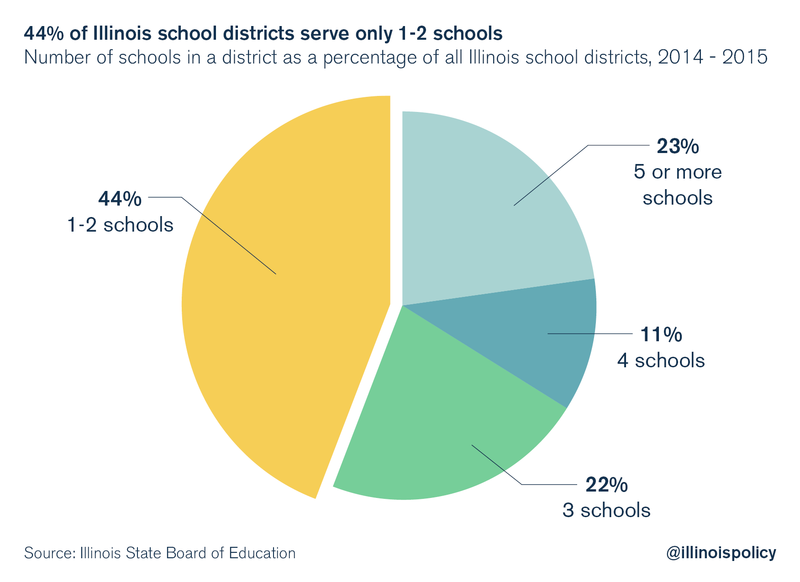Illinois spends the most per student of any state in the Midwest
On average, Illinois schools spend $13,077 per student.
Illinois spends the most per student of any state in the Midwest.
On average, Illinois schools spend $13,077 per student.
Nearly half of the money the state appropriates for education goes to fund pensions.
But some advocacy groups are demanding the state spend up to $6 billion more per year on education.
Money is not the problem. Demands for more money only serve to distract from the real problems with education funding: the billions of dollars trapped in Illinois’ education bureaucracy due to out-of-control pensions, duplicative school district administrations and executive pay.
$13,077 per student
Illinois already spends the most money per student of any state in the Midwest, the 13th-most per student in the nation, and far more than any other neighboring state, according to the U.S. Census Bureau.

Illinois spends 40 percent more per student than Kentucky, 37 percent more than Indiana, and 32 percent more than Missouri. The neighboring state that spends most comparably to Illinois is Wisconsin, which still spends 17 percent less than the Land of Lincoln.

If critics really want to address what’s wrong with education finance in Illinois, they should focus on the real problems.
Nearly 50% of education funding goes to pensions
Nearly 50 percent of state appropriations to education (excluding Chicago) are consumed by teacher pension costs. Pension costs for teachers were just 20 percent of state appropriations in 2005.

Costs have risen because of an explosive growth in teacher benefits. Benefits owed to teachers and current retirees have grown to nearly $110 billion in 2015 from just $10 billion in 1987. Up by nearly 1,000 percent, benefit growth has been far faster than taxpayers’ ability to pay for those benefits over the past 30 years.

Too many school districts fuel nation’s highest property taxes
The other major drain on education funds is the growing costs of Illinois’ excessive number of school districts and the administrators who run them.
Many of those district administrations are duplicative or unnecessary. Nearly half of Illinois school district administrators serve just one to two schools, and over one-third of all school districts serve fewer than 600 students. An additional layer of bureaucracy in those districts is inefficient.

Many of those unnecessary districts are run by administrators who receive executive-level pay. Over 80 percent of Illinois superintendents currently receive six-figure compensation packages, and they’ll each receive $2 million to $8 million dollars in total pension benefits over the course of their retirements.

Fixing education means tackling foundational reforms
Advocates of tax increases and higher spending don’t want to be held accountable for poor educational outcomes and fiscal mismanagement in Illinois, so they blame the state and a lack of funds.
Reforms that could unleash those dollars to benefit Illinois’ classrooms and children are blocked by the very advocacy groups calling foul. They’d rather demand billions in additional taxes on Illinoisans to protect the status quo and their bureaucracies.
If critics truly wished for more funding to reach Illinois’ students, they’d push lawmakers to reform pensions, consolidate districts and increase accountability – not demand more from struggling taxpayers who already pay the highest property taxes in the nation.
That means changing the status quo in education by moving new teachers into 401(k)-style retirement plans, easing the consolidation process for school district administrations, and giving parents the power to hold their schools accountable.

